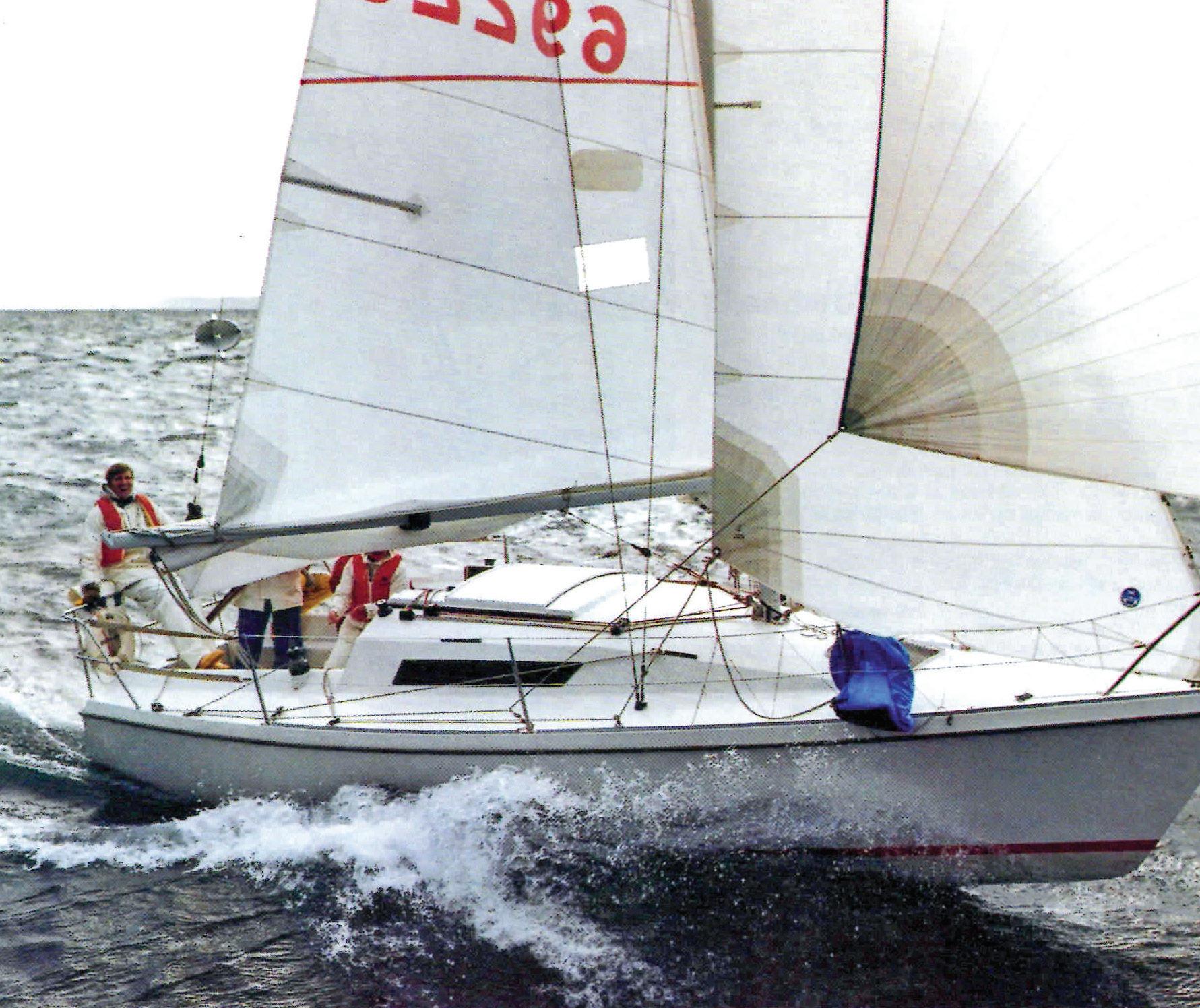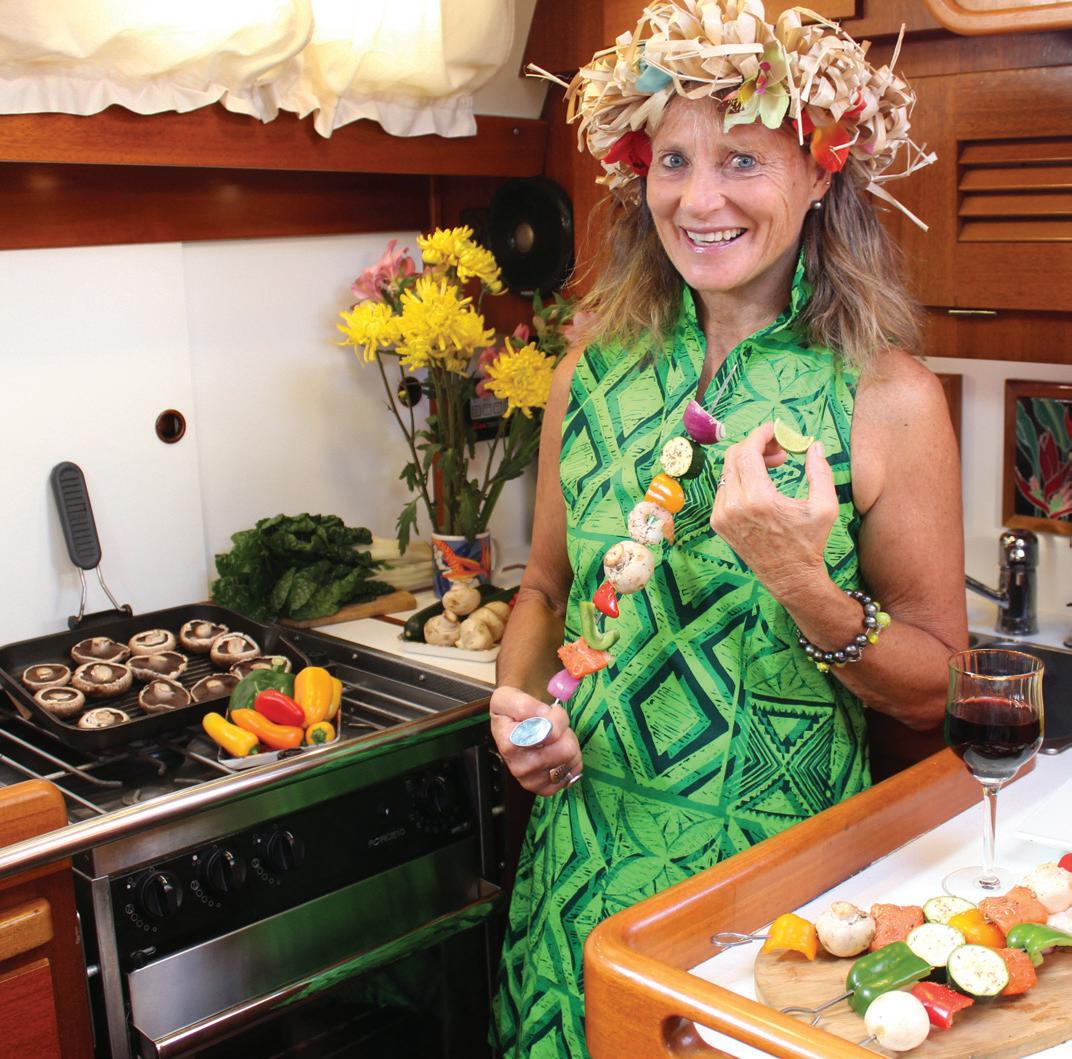
5 minute read
Three Sheets Northwest
24 Three Sheets Northwest
by Deborah Bach
BOATERS TO THE RESCUE:
Living aboard in California during the 1989 Loma Prieta earthquake, Tami Allen began to see her boat, and vessels generally, in a different light.
In the days following the 6.9-magnitude quake, which killed 63 people and injured thousands more, Allen served as an interpreter helping Spanish-speaking people in Red Cross shelters find housing. At night she went home to her boat, where she could cook, access fresh water and sleep through the aftershocks that sent people scurrying from their homes to muster areas.
“It was so different for the people who were trying to deal with living on land than what I was going through,” says Allen, the harbormaster for Bainbridge Island. “The people who were on boats fared so much better. That’s when I started thinking about a vessel as being an emergency response solution.”
That thought morphed into a plan after Allen talked with a firefighter who helped with the Hurricane Katrina response in 2005 and told her about private boat owners rescuing people from rooftops and streets in flooded New Orleans and surrounding areas. Those efforts evolved into the New Orleansbased nonprofit organization Cajun Navy Relief, which also helped rescue people after Hurricane Harvey in 2018.
Allen started thinking about launching a similar initiative in the Northwest. She eventually created the Bainbridge Island Emergency Flotilla, believed to be the region’s first of its type. The effort involves a group of local boat owners who have volunteered to help if the Seattle area gets hit with the major earthquake it’s overdue for, or another disaster. That could be anything from transporting people after a landslide to helping deploy containment booms following an oil spill on the water.
The flotilla so far includes 29 credentialed boat owners who have taken a couple of required incident command classes, passed background checks and, in a few cases, obtained ham radio licenses. More than 50 boaters have offered to volunteer, Allen says, and she hopes to expand the roster of credentialed boaters to 100.
The effort is part of Bainbridge Island’s broader emergency preparedness plan, which involves hubs organized by neighborhood, emergency centers across the island and citizenled teams of volunteers. The flotilla’s primary role in a disaster
would be transporting people, Allen says — getting workers home, bringing responders to the scene, rescuing tourists who pour off the ferry to Bainbridge often with nothing more than a cell phone and water bottle.
Boats in the flotilla range from runabouts to trawlers and sailboats in the 30- to 40-foot range. Lest you think your boat is too small to participate, Allen emphasizes that vessels of any size — even dinghies, canoes and rowboats — are not just useful, but needed. She recalls hearing about a jet-ski being used to transport people in the Bahamas, two at a time, after a disaster, and points out that Puget Sound’s tidal ranges and geography require a range of boats. A deep-keel boat might not work in some areas, for example, or smaller boats could be needed to shuttle people to and from beaches. A mix of sailboats and powerboats is desirable since fuel could be scarce, as is having boats in various locations.
“If an earthquake damages one area more than another, we want diversity of where the boats are — in driveways, on trailers, in the water,” Allen says. “All boats welcome, all boats needed.
“And nothing replaces a local boater with a local boat,” she says. “These are boats that know how to deal with Northwest water. They’re set up where we are.”
Boaters rescuing people is nothing new, of course. Vessels have been used to get people to safety after floods, earthquakes, wildfires and other disasters. Yet many people in the Northwest don’t think of the region’s waterways as alternate evacuation routes, Allen says.
“Any time something’s happening on the shore, the water is a common highway that we tend to forget is available,” she says. “We look at the I-5 corridor and we look at evacuation routes, but we have a large number of additional evacuation routes (on the water) if we have the boats to maintain them.”
The largest sea evacuation in history was on 9/11, when hundreds of boats, many of them privately owned, streamed to the shore of Manhattan and rescued almost 500,000 people in less than nine hours, as chronicled in the short documentary “Boatlift.” For the thousands of people frantically crowding the shoreline, those boats were a lifeline back to their homes and families after the subway system and other modes of transportation shut down, leaving them stranded.
“The routes weren’t pre-determined and volunteers weren’t pre-assigned,” Allen says of the 9/11 rescues. “It proves again that boaters are this incredibly well-trained, resilient, self-sufficient and self-motivated group of volunteers with local knowledge, specific skills, good equipment and good communications.
“They’re already kind of three steps ahead of the general population in being able to deal with an earthquake or other disaster.”
And boaters are predisposed to assist in emergency situations, Allen points out. The culture of seamanship, after all, is to be prepared to look after yourself and help others if needed.
“I think boaters are going to do this whether I do what I’m doing or not,” she says. “Every time you see something that looks wrong on the water, you see boaters doing what boaters Emergency Flotilla volunteers participate in a training exercise in Eagle Harbor.

do. Boaters never pass a boat if something doesn’t look right. It’s what we all do anyway. You can’t help yourself.”
But surprisingly, considering the Northwest’s long maritime history and thriving recreational boating culture, Allen says to her knowledge the Bainbridge flotilla is the first of its type in the region. It’s taken someone with Allen’s vision and organizational skills to launch what could be a critical resource if the longanticipated big one roils the Cascadia subduction zone.
Allen is hoping the effort will become regional, with other volunteer flotillas around Puget Sound. And whether or not you opt to get involved, Allen has a message for current and aspiring boat owners — a boat is not just a money pit (though it may well be that) but a pragmatic purchase as a refuge and a potential escape and rescue vehicle.
“In the Northwest, having a boat set up as an earthquake place just to rest is worth it,” she says. “That’s your excuse to keep your boat. It’s an excuse to get a boat — to have that independent, self-sufficient unit, even if you live in a house.”
For more information about the Bainbridge Island Emergency Flotilla or to get involved, contact Allen at tallen@bainbridgewa.gov or (206) 786-7627.
Three Sheets Northwest is produced by Deborah Bach and Marty McOmber. You can find them sailing their Passport 40 around the Salish Sea and beyond.






